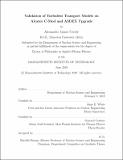| dc.contributor.advisor | Anne E. White. | en_US |
| dc.contributor.author | Creely, Alexander James. | en_US |
| dc.contributor.other | Massachusetts Institute of Technology. Department of Nuclear Science and Engineering. | en_US |
| dc.date.accessioned | 2020-01-08T19:37:56Z | |
| dc.date.available | 2020-01-08T19:37:56Z | |
| dc.date.copyright | 2019 | en_US |
| dc.date.issued | 2019 | en_US |
| dc.identifier.uri | https://hdl.handle.net/1721.1/123374 | |
| dc.description | This electronic version was submitted by the student author. The certified thesis is available in the Institute Archives and Special Collections. | en_US |
| dc.description | Thesis: Ph. D. in Applied Plasma Physics, Massachusetts Institute of Technology, Department of Nuclear Science and Engineering, 2019 | en_US |
| dc.description | Cataloged from student-submitted PDF version of thesis. | en_US |
| dc.description | Includes bibliographical references (pages 351-369). | en_US |
| dc.description.abstract | This thesis developed hardware and analysis techniques to measure two validation constraints experimentally, and then applied these constraints in the validation of plasma turbulent transport models on two tokamaks, Alcator C-Mod and ASDEX Upgrade, resulting in both greater physics understanding of multi-scale turbulent interactions and greater confidence in predictions for future fusion devices. On the path toward the clean, sustainable, and safe energy of a fusion power plant, experiment and modeling each contribute something unique. Before one can in good faith use plasma turbulent transport models to explain turbulent dynamics or predict machine performance, however, one must ensure that these models can correctly reproduce experimentally measured conditions on existing devices. Validation, the process of determining how accurately a model represents reality, has thus become a key endeavor in fusion energy research. | en_US |
| dc.description.abstract | First, this thesis developed an analysis technique to measure the electron perturbative thermal diffusivity based on tracking the propagation of heat pulses generated by partial sawtooth crashes. In addition, correlation electron cyclotron emission (CECE) hardware was constructed on both Alcator C-Mod and ASDEX Upgrade, and analysis techniques were derived, in order to measure turbulent electron temperature fluctuations. These validation constraints were applied to two turbulent transport models, the nonlinear gyrokinetic model and the quasi-linear gyrofluid model. In particular, these constraints were used to study the importance of multi-scale turbulent effects (due to coupling between ion- and electron-scales) in correctly modeling plasma behavior. | en_US |
| dc.description.abstract | The gyrokinetic codes GYRO and GENE were validated on Alcator C-Mod and ASDEX Upgrade respectively, using both constraints developed in this thesis as well as ion and electron heat fluxes from power balance, revealing that in some cases ionscale simulations are sufficient to match experimental constraints, while in other cases multi-scale effects are important. To investigate this discrepancy, a novel type of validation study was performed with the gyrofluid code TGLF, including many discharges from both machines. This study resulted in two physical criteria that determine when multi-scale effects are important, and when ion-scale simulations are sufficient to model the plasma behavior, shedding light on the physical phenomena that govern the importance of multi-scale turbulent effects. | en_US |
| dc.description.statementofresponsibility | by Alexander James Creely. | en_US |
| dc.format.extent | 369 pages | en_US |
| dc.language.iso | eng | en_US |
| dc.publisher | Massachusetts Institute of Technology | en_US |
| dc.rights | MIT theses are protected by copyright. They may be viewed, downloaded, or printed from this source but further reproduction or distribution in any format is prohibited without written permission. | en_US |
| dc.rights.uri | http://dspace.mit.edu/handle/1721.1/7582 | en_US |
| dc.subject | Nuclear Science and Engineering. | en_US |
| dc.title | Validation of turbulent transport models on Alcator C-Mod and ASDEX upgrade | en_US |
| dc.type | Thesis | en_US |
| dc.description.degree | Ph. D. in Applied Plasma Physics | en_US |
| dc.contributor.department | Massachusetts Institute of Technology. Department of Nuclear Science and Engineering | en_US |
| dc.identifier.oclc | 1134988749 | en_US |
| dc.description.collection | Ph.D.inAppliedPlasmaPhysics Massachusetts Institute of Technology, Department of Nuclear Science and Engineering | en_US |
| dspace.imported | 2020-01-08T19:37:52Z | en_US |
| mit.thesis.degree | Doctoral | en_US |
| mit.thesis.department | NucEng | en_US |
